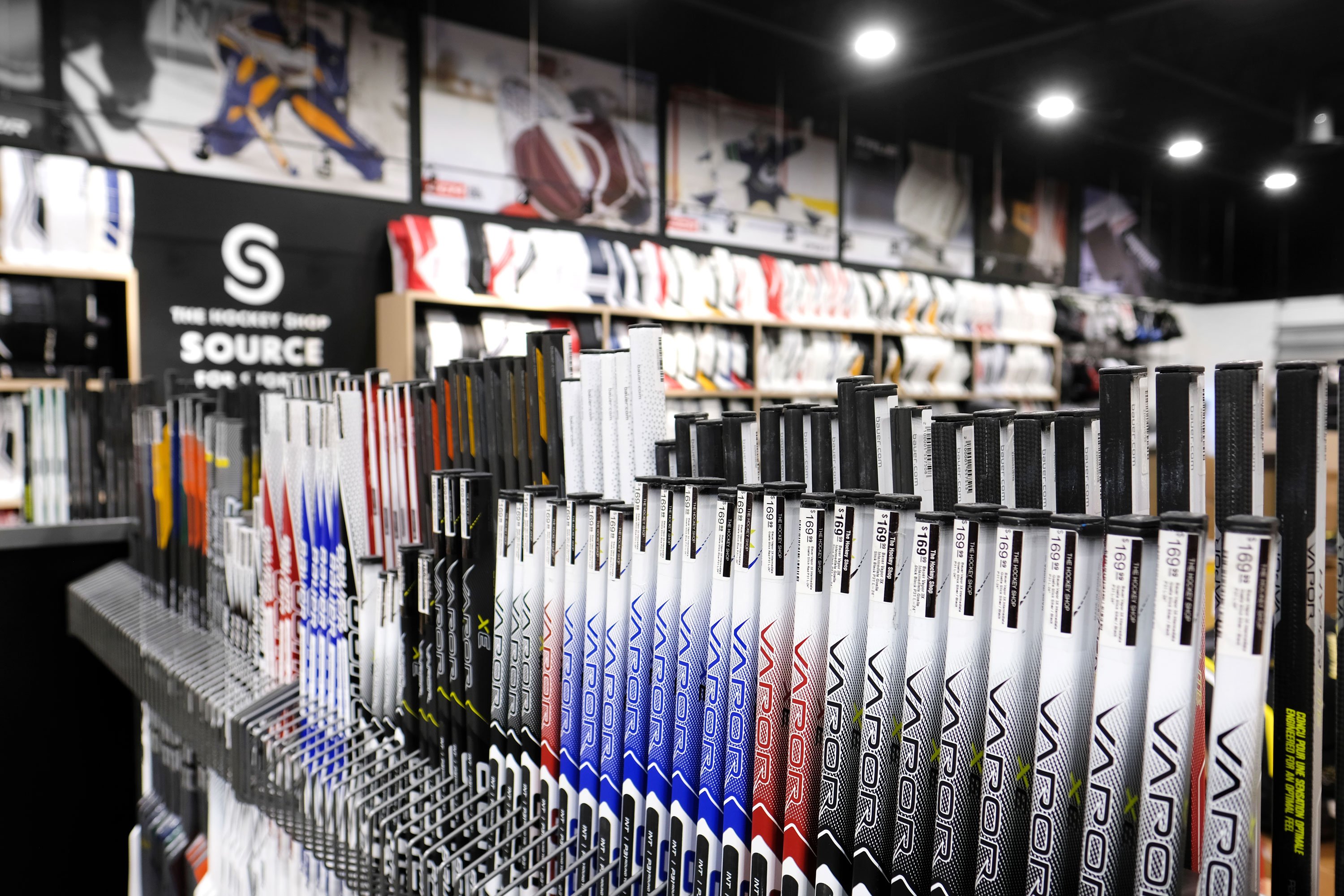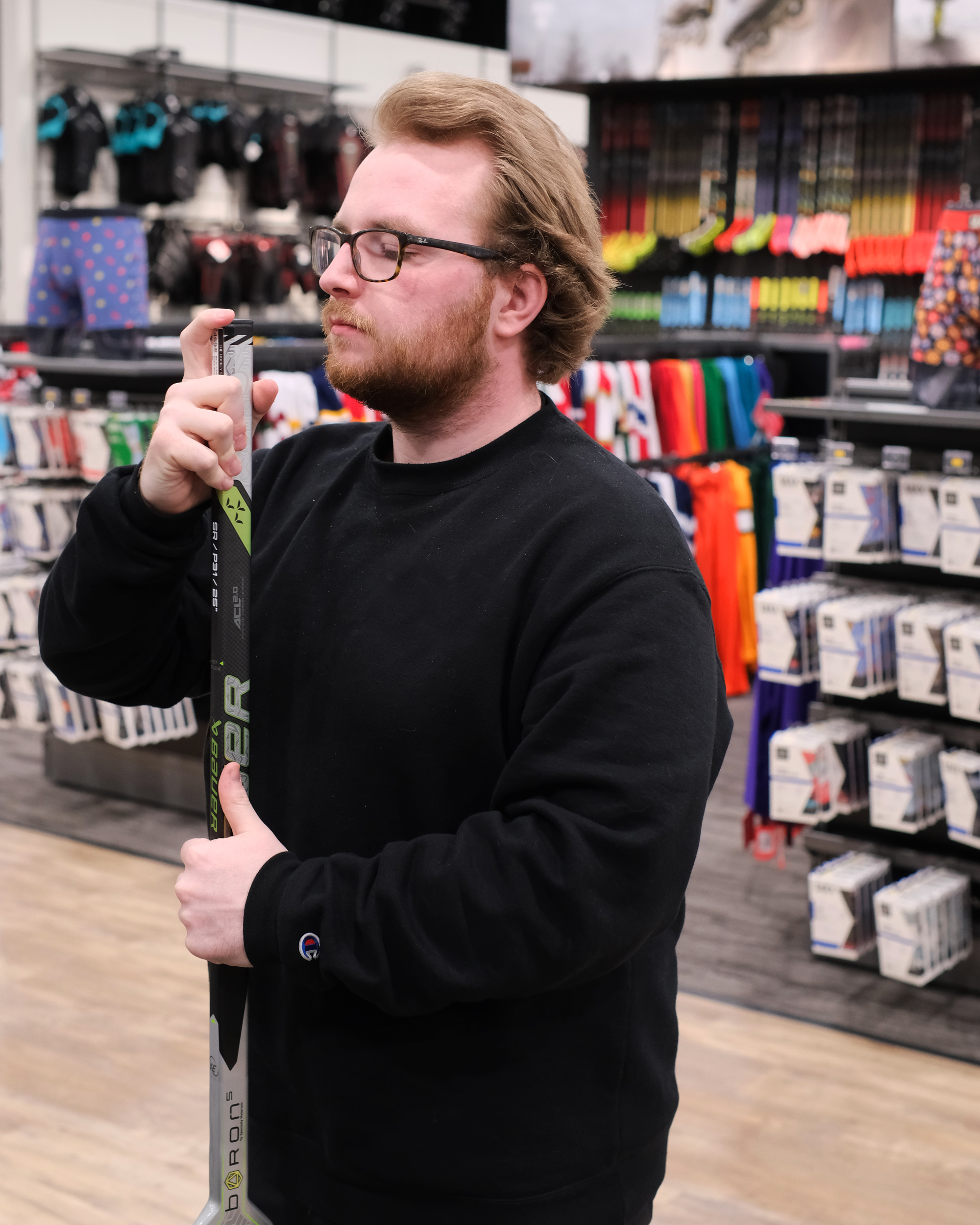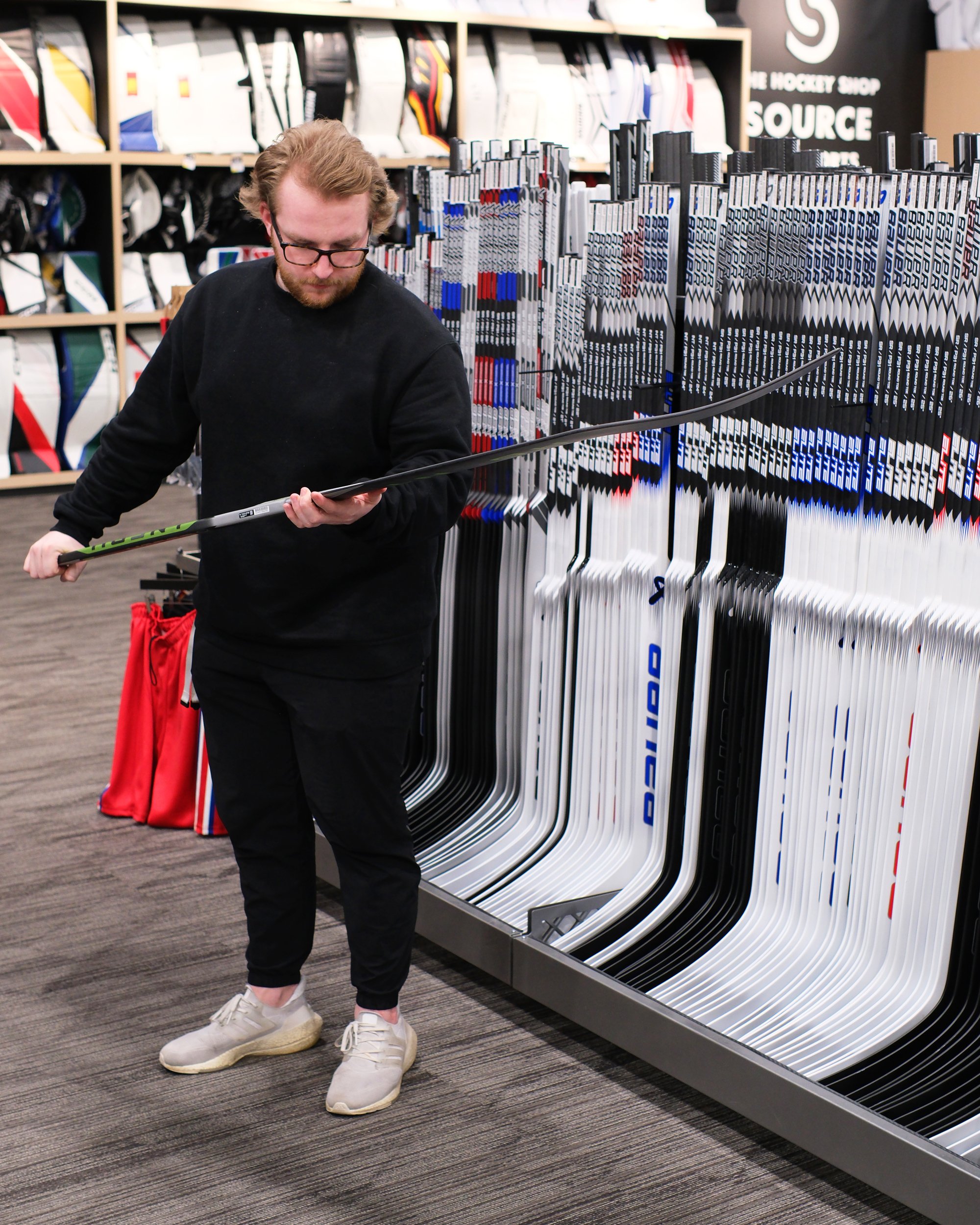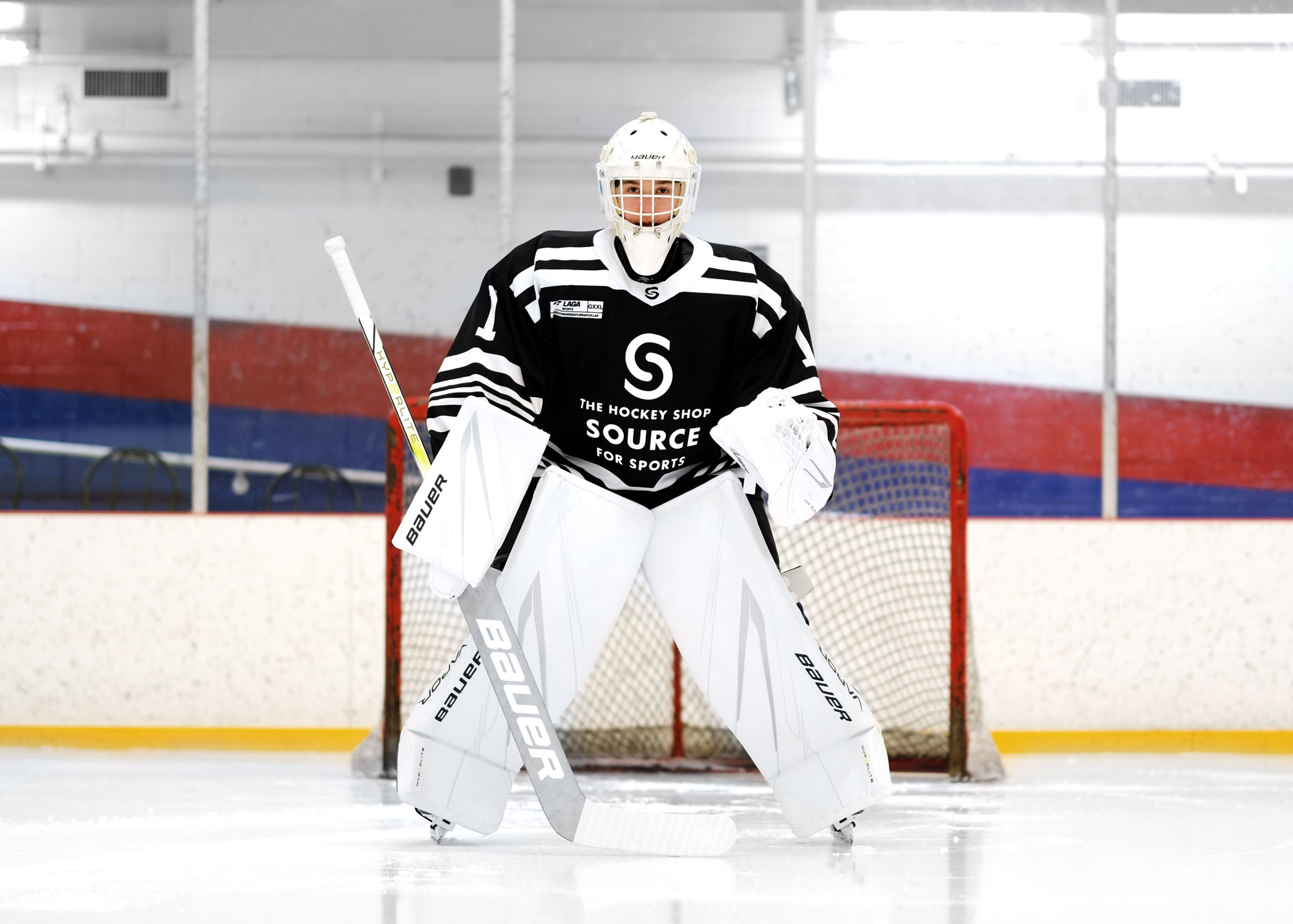How to choose the right Goalie StickUpdated a year ago
Sticks for goalkeepers are usually sized according to their preference and playing style instead of their height, unlike other gear.

When buying a new goal stick, the most important measurement to consider is the paddle height, which is typically taken from the heel of the stick to the shaft/paddle interface. The paddle height is significant because it determines the goalkeeper's depth in the ready stance and places the blocker in an optimal position if sized correctly.


To begin choosing the right stick:
Put on your goal skates and, if possible, your pads and blocker. Get into your natural stance, the one you would use during most of the gameplay. Make sure that the entire blade of the stick is flush with the ground and is located 1-2 feet in front of the goaltender's feet.

While in this position, ensure that the inside edge of the blocker hand is on the outside edge of the goal pad while holding the stick just above the paddle. This will prevent double coverage with the goal pad (if the stick is too small) and seal the seven-hole (if the stick is too large).
The ambiguity of "natural stance," particularly among young goalkeepers, makes stick sizing subjective compared to other equipment. Children usually use taller sticks than their height because their stance depth is not as aggressive as that of seasoned goalkeepers.
The shaft length, on the other hand, should be left at its stock length. It counterbalances the blade's weight and ideally places the center of gravity at the top of the paddle. The shaft length should only be modified for advanced puck handlers. Cutting the shaft will allow more power transfer when shooting by keeping the blade flush to the ice near the goaltender's feet.
Please note that Bauer goal sticks measure around 2" shorter than other brands due to a different paddle height measurement, so be cautious when selecting a stick from that brand.